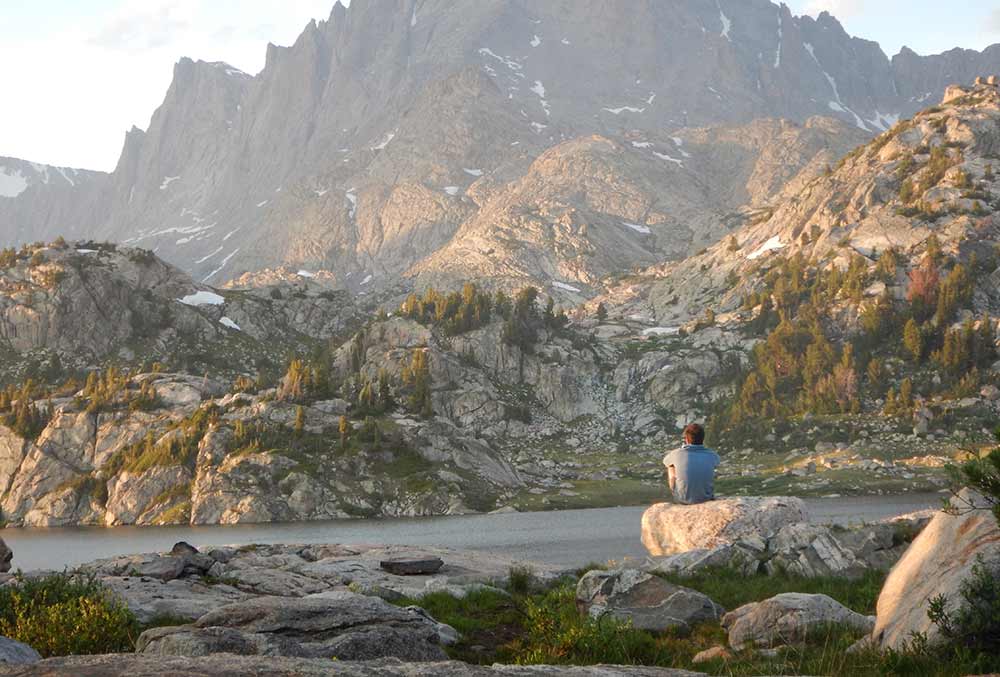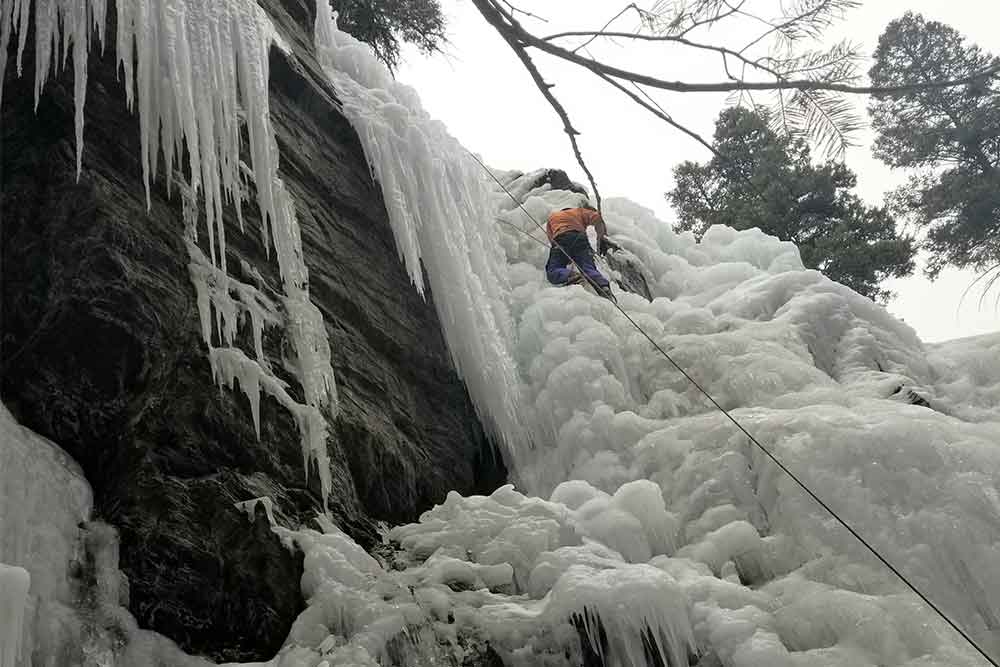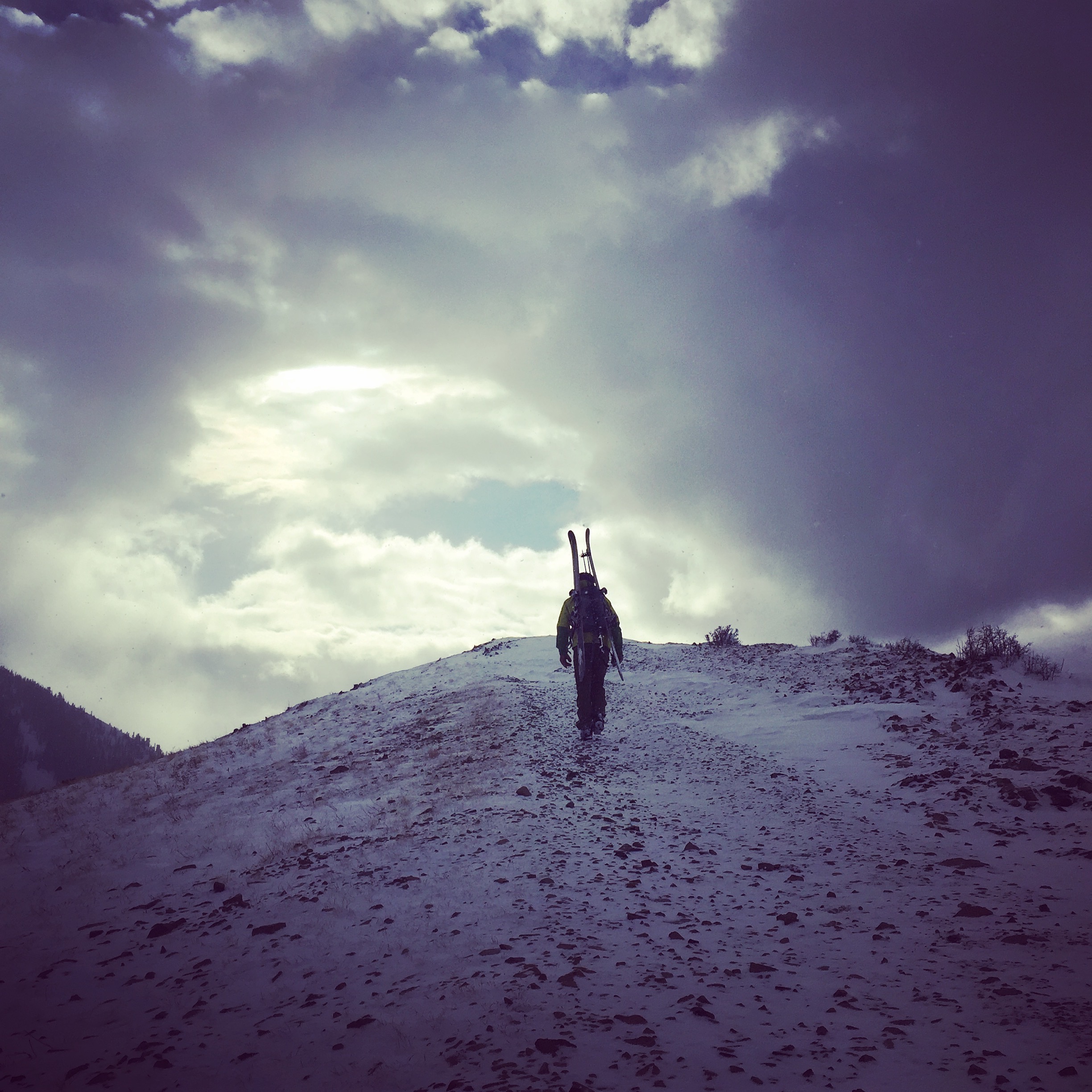8 Steps to Simplifying Your Life – In the Backcountry

When I was young, I was part of an adventure outing group in western North Carolina – kind of like Boy Scouts, but less formal, more oriented toward outdoor sports, and void of any religious components.
We’d hike, climb and paddle all over the country, just a rag-tag group of granola eating kids and a few parent chaperones wreaking havoc on the wild places of the world. Backpacking trips required great preparation, and we’d hold meetings to review our packing lists. Just before each trip, we’d gather at our headquarters and weigh our packs on an old hanging scale, just to be sure we were lean and mean.
I recall one trip on a 50-mile section of the Appalachian Trail in Virginia quite well. My father, ever the adventurer but never quite the technical backpacker, was joining us.
At the pre-trip weigh-in, my father hoisted his shiny new pack onto the scale, and a dozen or so mangy outdoorsmen and women watched with horror as the needle dipped to somewhere in the neighborhood of 80 pounds – quite excessive, and even dangerous, for a few days on the AT.
 I would later learn the hard way that the extra weight was due to my dad’s lack of backpacking experience – he’d brought nothing to eat but tins of Vienna sausages, saltines and a few chalky Power Bars.
I would later learn the hard way that the extra weight was due to my dad’s lack of backpacking experience – he’d brought nothing to eat but tins of Vienna sausages, saltines and a few chalky Power Bars.
In my youthful ignorance, I’d assumed that entrusting him with purchasing and carrying rations for both of us didn’t require any oversight on my end. On those subsequent cold, rainy nights in the highlands of Virginia, when I sat down to tuck into a tin of musty, flaccid sausages and saltines, I couldn’t help but wonder where things had gone wrong.
Fast forward some 15 or so odd years, and now I’m a grown man with plenty of experience and the determination not to repeat such mistakes. As a matter of fact, I’ve adopted a philosophy of minimalism when it comes to backpacking in general, not just foodstuffs that resemble bloated worms in a puddle of dirty rainwater.
Really, though – minimalist backpacking, i.e. shedding all those unnecessary items in your pack and, consequently, all that extra weight, is all the rage right now. People compare backpack weights the way others compare the sizes of, well, you get the picture.
Mine is consistently around 45 pounds for trips under ten days, but who’s counting?
Here are eight steps toward reaching that higher level of backcountry minimalist zen … and never eating another tinned sausage.
1) Compartmentalize
When assembling your backpacking gear, organization is key. Disorganization isn’t really a cause of a bloated backpacking kit – it’s more like a symptom. If you see a pile of loose, unrelated items accumulating beside a person’s pack as they search for, say, a rain shell, chances are their pack is pretty darn heavy, too.
Try grouping together things that you’ll need at the same time. For example, cookware, clothing, first aid, toiletries, etc. All of these things can be grouped into their own individual package. It makes them more accessible and brings you a little closer to enlightenment. I recommend buying a few small sacks for each of these categories of items. Granite Gear Ultralight Zipsacks can help you stay organized without adding much weight. I bought four of these about four years ago, and they have yet to wear through, even with regular use.
2) Think outside the tent
A lot of people think there’s only one real option for shelter on a backpacking trip – the trusty old tent. While tents are all well and good, they can also be pretty heavy. A rain fly, poles, ground cloth, stakes – these things start to add up quickly. Ask most self-styled minimalist backpackers about their shelter, and they’ll probably extol the virtues of the good old tarpaulin. Just to be clear, we’re not talking about your Grandpa’s crinkly, unwieldy poly tarp.
We’re talking an ultra light, multi-application shelter system. Tarps from manufacturers like Mountain Laurel Designs and Hyper Lite weigh pennies on the dollar compared to tents. If you’re worried that a tarp is too flimsy or provides inadequate protection, I’m afraid you’re mistaken. While it’s true that more basic tarp designs, i.e. squares, are only good for very basic shelter designs, more advanced tarp designs, like the pyramid, can hold their own against any four-season wall tent design in the most grueling conditions. Most can be set up with only a few lengths of guyline, a tree limb or two, and perhaps a trekking pole. In other words, they’re simpler. Why is simplicity good? See Step 1.
Related Article: Best New Fly Fishing Gear of 2017
3) Think efficiency
Or is it think efficiently? Both. As a newly-minted minimalist backpacker, you’ve got to start thinking differently. How can you make what you’ve got go farther? How can you get by on carrying less? How far you’re willing to go in this department depends on your commitment to the cause. Here’s an example of thinking efficiency efficiently.
Backpacking stove fuel takes up a lot of room in your pack and isn’t very light. Planning on carrying an extra can of fuel? Just as a back-up? Wrong answer, pal. We don’t need another can of fuel. We just need our first can to go farther. Try this – take one of those shiny, metallic-looking windshield solar reflectors, the ones that look like bubble-wrap with a tin foil enamel, and, using a little duct tape, make a pot cozy for your cookware. Build it around your cooking pot so that it fits snugly, fashion a little cap for it, and voile! If you’re cooking something like ramen, simply boil water, add the noodles, cut off the stove and place the pot in the cozy.
Great insulation means the food will continue to cook inside without using any more fuel. The hot pot won’t melt the cozy, and you won’t burn your fingers when holding it. Great idea, huh? I stole it from a minimalist backpacking blog about four years ago, and man, I’ve been popular around campfires across the nation ever since.
4) Share the load
This one is pretty simple. Unless you’re a solo hardman/hardwoman out to conquer the wild on your own, you’re probably backpacking with some other people. This affords you the opportunity to shift a little bit of your burden onto everyone else … for the greater good, of course. You don’t really need three stoves for a three-person group. Leave yours at home and share someone else’s.
Remember that nice two-person tarp you bought between steps 2 and 3? Share it with the unfortunate soul still chained to that old overburdened mentality. Call it campfire communism.
5) Pack things with more than one use
I couldn’t really think of a clever title for this step, but like the previous one, it’s pretty simple. Why pack two different items for two different uses when you can just pack one. Case in point – the trekking pole. Trekking poles are becoming ubiquitous on the trail these days, and for good reason. They help you maintain your balance, improve your posture while hiking, and make you feel a little more adventurous than you actually are.
But are they really worth bringing a long? Well, I’m sure by now you were expecting another Step 2 reference, and here it is. Trekking poles can double as structural supports when setting up your new tarp! In fact, many backpacking tarps are designed to incorporate a trekking pole. See what other items you can use to kill two birds. While you’re at it, if you’re looking for a new set of trekking poles, I recommend the Black Diamond Alpine Carbon Cork. Carbon poles are a little more brittle than traditional aluminum poles, but they trade strength for weight reduction. Speaking from experience, don’t over extend these poles when using them in a tarp set up, as they can crack at the joints.
6) Space food!
Yes, you read that correctly! Now that we’re well into the space age, there’s no reason anyone should be humping tins of mystery meat logs into the backcountry. Brands like Mountain House make awesome, freeze-dried meals that weigh next to nothing. Just add hot water. The turkey tetrazzini is especially scrumptious, in my opinion. Again, these are meals that you can share (Step 4.)
If you’re more of the badass mountain cook type, you can try composing your own instant meals. Potato flakes, instant rice, dehydrated beans and sauce powders are all good places to start. Pro tip – couscous is a great component to homemade instant backpacking meals. It’s exotic, delicious, and cooks without direct heat. If you bring some on your next backpacking trip, people will probably like you more, guaranteed. While we’re on the subject, you should choose a stove that embodies your minimalist lifestyle.
I love my MSR Pocket Rocket. It’s light, easy to use, and efficient.
7) Go commando
No, not your underpants. Well, actually yeah, you can probably ditch your underpants when hiking to save a little weight. Unless you’re one of those dudes that hikes in a kilt. Anyway, what I meant was your backpack frame, silly!
Yes, large framed packs are the industry standard these days, but frames can be heavy. Lots of backpack manufacturers, in order to cut down on weight, are offering frameless models.
While a frame might seem like a nice feature, making your big old heavy gigantic backpack a little more manageable … do you see where I’m going with this? Yes, by following Steps 1-6, we’re going to have less stuff, lighter stuff, and our stuff is going to be better organized. Therefore, a lighter backpack sans frame might even be a better option for us!
8) Be honest with yourself
Do you really need to bring that gigantic copy of The Hobbit with you? Are you really going to read it? Do you even read? These are the kinds of questions you need to ask yourself when packing. A stick of deodorant? Nah. Bask in your own filth, man. Binoculars? Probably not. A field guide to birds of the Northern Rockies? Don’t make me laugh.
All joking aside, if you’re a serious birder, bring the guide and binoculars. But remember, unless this is specifically a birding trip, forgoing those items will probably be inconsequential. I’ve learned to be brutally honest with myself when preparing for a backpacking trip. What do I really need out there? Food, water and shelter, for starters. The bare minimum, clothing-wise. Perhaps two outfits – one light hiking get-up and one heavier cold-weather get-up. This depends, of course, on where and when you’re hiking. A map and compass are always good, and so is a good knife.
Get a good first aid kit. I recommend the Ultralight and Watertight Kit from Adventure Medical Kits. It’s pretty comprehensive, but I’ve added some extra Immodium, antihistamine and anti-inflammatory medication to mine.
Related Article: Effects of Outdoor Exercise
A few words in parting – simplifying your life in the backcountry
Well, we’ve come a long way since Step 1. It seems like just yesterday that we were helpless as a blindfolded toddler trying to shove a 12-person party tent into a 200-liter mule pack.
My, how things have changed. Now we’re backpacking rock stars. We’ve got a mind for minimalism, and we ain’t afraid to use it.
It’s summer time now – time to get out and plan your next backpacking trip.
Remember these little pillars of wisdom as you go forth into this brave new world of less. Embrace the vacuum. Leave more room for yourself. And may you never have to eat another Vienna sausage.
You Might Like:










